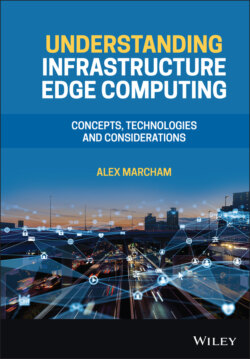Читать книгу Understanding Infrastructure Edge Computing - Alex Marcham - Страница 47
3.3.4 Layer 4
ОглавлениеLayer 4 is named the transport layer. This label may seem odd, but it is for good reason: Above the means to transcode digital data into physical signals at layer 1, the MAC functions and link local addressing provided by layer 2, and the globally unique endpoint addressing capabilities enabled by layer 3, there is a need for a group of functions which determine how to send and receive data on the network at a layer of abstraction, which enables them to perform tasks such as flow control and integrity checking of any data received without reliance upon any specific set of layer 1, 2, or 3 technologies. This transport layer is the bridge between the application at higher layers of the stack and the underlying network technologies below, whatever they may be.
Two popular examples of layer 4 protocols are the Transmission Control Protocol (TCP) and the User Datagram Protocol (UDP). The primary difference between these two is that despite the fact that both protocols operate at the transport layer, TCP provides a guarantee that any traffic sent across the network will be delivered to its destination complete and in the order that it was sent. Comparably, UDP provides no such guarantee; data sent using UDP does not create any layer 4 acknowledgement from its destination that it was or was not received correctly. If a piece of data were lost in transit across the network and the application were using TCP, the receiver of the data would notify the sender and a retransmission would be arranged, whereas with UDP, it would just be lost. Although this may seem like a large drawback, whether it is or not depends on the use case; for real‐time applications such as video conferencing or Voice over Internet Protocol (VoIP) calls, it is beneficial to the user experience to allow a certain amount of lost data compared to incurring the delay of the sender having to retransmit any lost data, which can result in odd sound or video to an end user.
Although still very commonly used, the TCP and UDP protocols are not always the optimal choice. These protocols emerged in 1974 and 1980, respectively, and as such predate the applications that today generate the vast majority of traffic on the internet and its constituent networks, sometimes by several decades. Modern alternatives (such as the Stream Control Transmission Protocol [SCTP], which is designed to incorporate many of the desirable features of both TCP and UDP) are emerging and will see increasing use in the near future for use cases that require their additional capabilities such as native support for multihoming in the case of SCTP, where two endpoints may each have multiple globally unique addresses, allowing for the use of redundant network paths for added resiliency.
